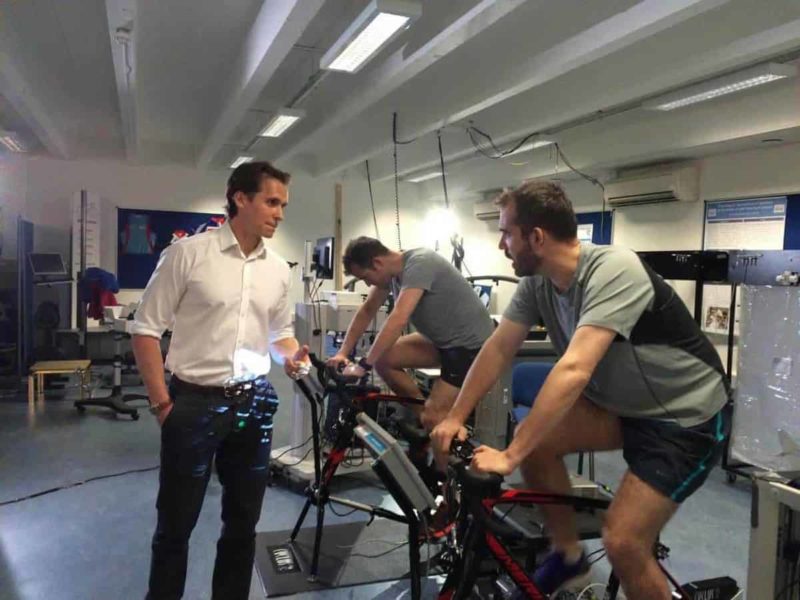Groundbreaking research shows that neurological health depends as much on signals sent by the body’s large, leg muscles to the brain as it does on directives from the brain to the muscles. Published today in Frontiers in Neuroscience, the study fundamentally alters brain and nervous system medicine — giving doctors new clues as to why patients with motor neuron disease, multiple sclerosis, spinal muscular atrophy and other neurological diseases often rapidly decline when their movement becomes limited.
“Our study supports the notion that people who are unable to do load-bearing exercises — such as patients who are bed-ridden, or even astronauts on extended travel — not only lose muscle mass, but their body chemistry is altered at the cellular level and even their nervous system is adversely impacted,” says Dr. Raffaella Adami from the Università degli Studi di Milano, Italy.
The study involved restricting mice from using their hind legs, but not their front legs, over a period of 28 days. The mice continued to eat and groom normally and did not exhibit stress. At the end of the trial, the researchers examined an area of the brain called the sub-ventricular zone, which in many mammals has the role of maintaining nerve cell health. It is also the area where neural stem cells produce new neurons.
Limiting physical activity decreased the number of neural stem cells by 70 percent compared to a control group of mice, which were allowed to roam. Furthermore, both neurons and oligodendrocytes — specialized cells that support and insulate nerve cells — didn’t fully mature when exercise was severely reduced.
The research shows that using the legs, particularly in weight-bearing exercise, sends signals to the brain that are vital for the production of healthy neural cells, essential for the brain and nervous system. Cutting back on exercise makes it difficult for the body to produce new nerve cells — some of the very building blocks that allow us to handle stress and adapt to challenge in our lives.
“It is no accident that we are meant to be active: to walk, run, crouch to sit, and use our leg muscles to lift things,” says Adami. “Neurological health is not a one-way street with the brain telling the muscles ‘lift,’ ‘walk,’ and so on.”
The researchers gained more insight by analyzing individual cells. They found that restricting exercise lowers the amount of oxygen in the body, which creates an anaerobic environment and alters metabolism. Reducing exercise also seems to impact two genes, one of which, CDK5Rap1, is very important for the health of mitochondria — the cellular powerhouse that releases energy the body can then use. This represents another feedback loop.
These results shed light on several important health issues, ranging from concerns about cardio-vascular impacts as a result of sedentary lifestyles to insight into devastating diseases, such as spinal muscular atrophy (SMA), multiple sclerosis, and motor neuron disease, among others.
“I have been interested in neurological diseases since 2004,” says co-author Dr. Daniele Bottai, also from the Università degli Studi di Milano. “The question I asked myself was: is the outcome of these diseases due exclusively to the lesions that form on the spinal cord in the case of spinal cord injury and genetic mutation in the case of SMA, or is the lower capacity for movement the critical factor that exacerbates the disease?”
This research demonstrates the critical role of movement and has a range of potential implications. For example, missions to send astronauts into space for months or even years should keep in mind that gravity and load-bearing exercise play an important role in maintaining human health, say the researchers.
“One could say our health is grounded on Earth in ways we are just beginning to understand,” concludes Bottai.
Source: Reduction of Movement in Neurological Diseases: Effects on Neural Stem Cells Characteristics https:/
If our reporting has informed or inspired you, please consider making a donation. Every contribution, no matter the size, empowers us to continue delivering accurate, engaging, and trustworthy science and medical news. Independent journalism requires time, effort, and resources—your support ensures we can keep uncovering the stories that matter most to you.
Join us in making knowledge accessible and impactful. Thank you for standing with us!

